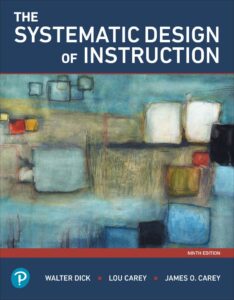By Brant Wilkerson-New
May 28, 2025
Microlearning is an instructional strategy that delivers content in tiny, focused segments, each targeting a specific learning objective. As people’s attention spans get ever shorter, microlearning has emerged as a powerful way to engage learners while maximizing knowledge retention. As opposed to age-old traditional learning methods that rely on long courses, modules, or one-day training seminars, microlearning delivers small and information-packed lessons that are very flexible and available anywhere and anytime on demand. Such small lessons can take many forms, such as short videos, quick quizzes, interactive games, infographics, or even brief audio clips. Each lesson is shorter and faster and delivers one learning outcome. Microlearning benefits learners with memory, comprehension, and speed of intake.
The Rise of Microlearning
The concept, use, and popularity of microlearning have rocketed, as has the rise of mobile technology, such as smartphones and tablets. These are ideal delivery devices for distributing microlearning content, as they provide flexible and easy access for learners who wish to do their learning on the go or with the ease of doing it at home. Learners can get instant access remotely to all of the necessary tools. They can use microlearning to review procedures quickly, reinforce previous lessons, or build new skills in under ten minutes.
This shift in learning has aligned with the digital transformation of education and training. Businesses, educational institutions, and even individual educators have found value in integrating microlearning into their instructional strategies, letting learners access their learning modules freely during coffee breaks, journeys to work, and between meetings.
Cognitive Science Behind Microlearning
One of the top strengths of microlearning is how it aligns with how our brains gather, absorb, and retain bite-sized pieces of information. Studies have shown that people learn better when information is broken into little chunks instead of delivered simultaneously. By presenting learners with smaller portions of content, microlearning reduces cognitive load and gives the brain time to absorb and efficiently process new knowledge. This method is particularly effective for reinforcing complex skills and behaviors. In addition, because microlearning is often built around real-world tasks or practical applications, it increases the relevance and transferability of knowledge to the learner’s daily life or job role.
Flexibility and Personalization
Another one of the great features of microlearning is that it is very flexible. It can be deployed across a whole range of different formats and platforms, adapting to the needs of all the different types of learners. For example, a sales team may benefit from short scenario-based video lessons that simulate real-world client interactions. At the same time, a manufacturing team may prefer step-by-step infographics explaining safety procedures. The adaptability of microlearning allows organizations to customize content for various departments, roles, and experience levels, resulting in more personalized and practical training experiences.
Empowering Learners
Using microlearning for courses also supports greater learner autonomy. Learners can choose when, where, and how they want to engage with their content, and this freedom of choice encourages self-directed learning, which also helps with individual engagement and motivation. When the learner has the power to access training materials on their own and at their own speed and convenience, they are more likely to continue and engage in more learning. This approach enhances personal development and helps build a learning culture within organizations.
Designing Effective Microlearning
For microlearning to be truly effective, it must be thoughtfully designed and laid out. It’s not simply about cutting a long eLearning course into smaller parts. Every microlearning unit should stand independently, with a clear objective and purpose. Designers must also consider how to create interactive content and make it relevant and visually engaging. A microlearning module should deliver value within minutes, which requires tight scripting, well-paced narration, and clean visual design. Moreover, microlearning works best when it’s part of a larger learning ecosystem. While it excels at delivering knowledge in the moment and supporting skill refreshment, it should ideally complement longer, more in-depth learning programs rather than completely replace them.
Microlearning in the Workplace
Corporate organizations that use microlearning very often report that their employees perform much better, with the use of microlearning, which allows for targeted interventions that quickly close knowledge gaps. The short bursts of small lessons provide precisely what the employee needs, and give it to them when needed. Microlearning also allows for quicker and easier content updating, which provides learners with the most current and up-to-date information and is very important in industries where knowledge and best practices evolve rapidly, such as healthcare, finance, or technology.
Tracking and Analytics
Microlearning allows for better tracking and analytics due to the modules being brief and more focused. As such, learning management systems can precisely monitor engagement, completion rates, and learner performance. This data can be invaluable for evaluating training effectiveness and identifying areas that need improvement. When combined with adaptive learning technologies, microlearning becomes even more powerful, allowing content to adjust dynamically based on the learner’s previous responses and behaviors.
Microlearning in Everyday Life
One of the most interesting aspects of microlearning is how it mirrors how people already learn and retain information outside of formal learning environments. Imagine how people search YouTube for a quick tutorial or scroll through social media for infographics and how-to videos. Microlearning can tap into the same types of behaviors and bring the learning into everyday life, which is a significant contributor to its rising success. It’s not just a convenient way to learn but an easier and more enjoyable one with better results.
Microlearning is a modern, learner-centric approach that emphasizes short, targeted bursts of information designed to achieve specific outcomes. It fits seamlessly into today’s digital learning landscape and meets the demands of learners who want accessible, engaging, and compelling content. By leveraging the power of mobile devices, the psychology of how people learn best, and the efficiency of focused instruction, microlearning offers an innovative solution to many challenges educators and trainers face today. If used strategically and with well-laid intention, microlearning can transform how we all think about learning and education, performance support, and continuous professional development in the years to come.
- About the Author
- Latest Posts
I’m a storyteller!
Exactly how I’ve told stories has changed through the years, going from writing college basketball analysis in the pages of a newspaper to now, telling the stories of the people of TimelyText. Nowadays, that means helping a talented technical writer land a new gig by laying out their skills, or even a quick blog post about a neat project one of our instructional designers is finishing in pharma.




